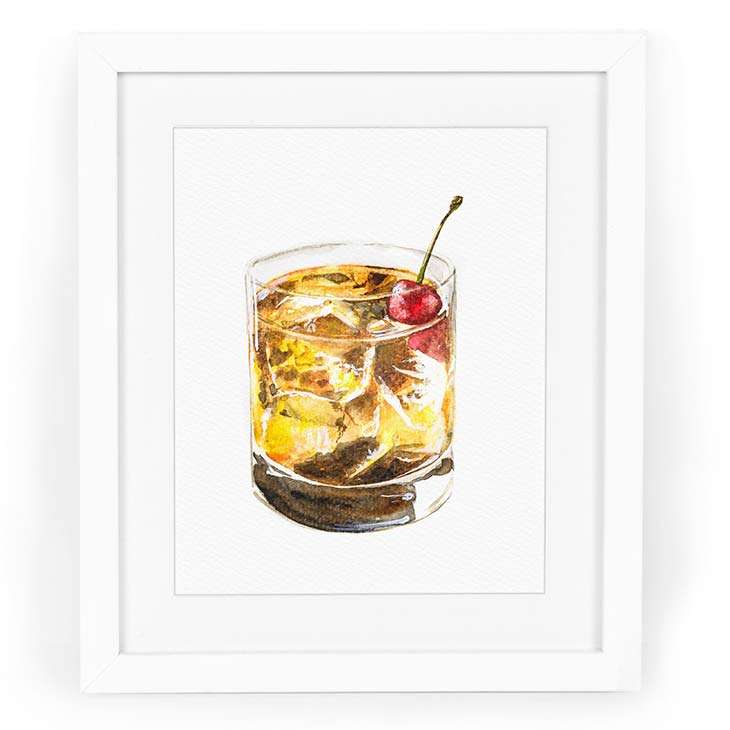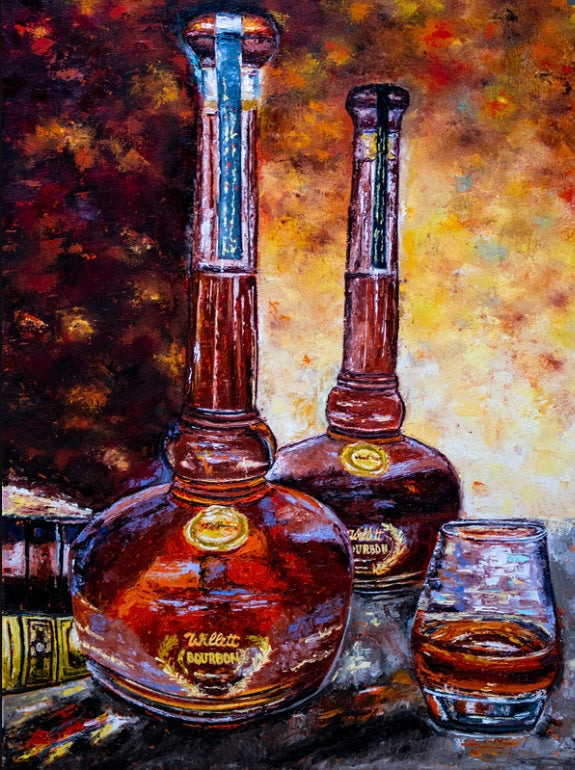Change Your Space with Magnificent Whiskey Art Inspired by Nature
The Relevance of Whiskey Art in Celebrating Heritage and Workmanship in the Beverage Sector
The detailed partnership in between whiskey art and the event of heritage and workmanship within the beverage market can not be overemphasized. Through thoughtfully made bottles and tags, whiskey brand names envelop their historic roots and the artisanal skills that specify their manufacturing approaches. This creative dimension not just improves market appeal however also works as a conduit for social storytelling, promoting a much deeper connection in between the craft and the consumer. As we discover the various facets of this subject, interesting questions regarding the impact of contemporary fads on standard practices develop, prompting additional evaluation.
The Historic Roots of Whiskey
At the heart of bourbon's appeal lies an abundant tapestry of historic roots that map back to ancient human beings. The beginnings of bourbon can be linked to the distillation practices of the Sumerians and Babylonians around 2000 BCE, where very early types of fermented grain beverages began to emerge. However, it remained in the Middle Ages that the art of purification advanced significantly, specifically in Ireland and Scotland, resulting in the production of whiskey as we understand it today.
The term "whiskey" itself stems from the Gaelic word "uisce beatha," meaning "water of life." This phrase highlights the social significance of bourbon in Celtic cultures, where it was usually related to routines, events, and public bonding. By the 15th century, distillation ended up being an identified craft within reclusive communities, leading the way for the facility of legal distilleries.
As profession paths broadened, whiskey's appeal expanded, transcending regional limits and catching the rate of interest of aficionados worldwide. Realism Art. This historical trip reflects not only the workmanship behind scotch manufacturing yet likewise its indispensable duty in social and social contexts, noting it as a significant beverage throughout history
Artistic Expression in Branding
Whiskey branding stands as an engaging crossway of creativity and business, where visual identity plays an important function in forming customer perception. The looks of bourbon tags, product packaging, and advertising materials mirror not only the brand name's story but likewise its core worths and heritage. Through creative expression, distilleries convey a story that reverberates with customers, stimulating emotions and triggering links.
Using color, typography, and imagery in branding serves to separate items in a saturated market. For example, traditional concepts might stimulate a feeling of credibility and craftsmanship, while modern designs can indicate advancement and forward-thinking. This tactical artistic instructions improves brand acknowledgment and loyalty, permitting consumers to create an individual connection with the scotch they pick.
Additionally, creative expression in branding typically functions as an event of local heritage. Distilleries frequently incorporate local symbols or historical references into their styles, producing a local color that welcomes consumers to take part in a broader social experience. Ultimately, the virtuosity behind whiskey branding not only improves visual allure however also enriches the general story of the brand, promoting a deeper gratitude for the craftsmanship and heritage ingrained in each container.
Craftsmanship in Container Design
The creativity apparent in whiskey branding prolongs beyond visual identification to incorporate the craftsmanship involved in bottle layout. Each bottle acts as a vessel not simply for the spirit within, however likewise for the story it outlines its quality, origin, and tradition. The style procedure requires precise focus to information, as components such official website as form, product, and closure add considerably to the general understanding of the whiskey.
Workmanship in bottle style entails choosing top notch glass that can boost the whiskey's shade and clearness, while additionally offering a tactile experience for the customer. The shape of the container need to be both aesthetically attractive and useful, often reflecting the heritage of the brand. Many distilleries choose special shapes or embossed logo designs that stimulate a sense of credibility and history.
Furthermore, the label style and typography play a vital function in interacting the brand name's story. Realism Art. A well-crafted bottle not only astounds the customer's eye but also reinforces the brand name's commitment to high quality and practice. This way, the craftsmanship of container style ends up being a crucial aspect of the bourbon experience, merging creativity with a profound respect for heritage
Cultural Relevance of Whiskey Art
Celebrating practice and workmanship, the social importance of whiskey art transcends simple looks, intertwining with the social and historical stories of the regions where it comes from. Each container functions as a canvas, illustrating the special tales, mythology, and traditions that have shaped local whiskey-making techniques. The elaborate layouts frequently reflect the heritage of the distillers, incorporating icons and themes that reverberate with the culture and worths of their communities.

In addition, scotch art plays an essential duty in communal gatherings and celebrations, serving as explanation a substantial link in between people and their shared experiences. By valuing the creativity in scotch product packaging, consumers cultivate a much deeper understanding and regard for the craft, eventually enhancing their enjoyment of the drink itself.
Modern Trends in Bourbon Discussion
In current years, the discussion of scotch has developed to reflect modern tastes and trends while still honoring traditional craftsmanship - Whiskey Art. Distilleries are progressively focusing on aesthetic components that improve the general alcohol consumption experience, linking the space in between heritage and modernity
Ingenious bottle styles have actually emerged, often including lasting materials and creative tags that inform engaging stories. Numerous brands currently team up with local artists, infusing their items with unique visual expressions that reverberate with consumers. Additionally, limited-edition releases are usually packaged in collectible containers, adding worth and allure for aficionados.

Final Thought
In conclusion, scotch art offers as an important channel for sharing the heritage and workmanship intrinsic in the drink market. Via detailed branding, cutting-edge bottle layouts, and culturally substantial creative aspects, bourbon brand names successfully honor their practices and connect with customers.


Workmanship in bottle design includes choosing high-quality glass that can improve the scotch's color and quality, while likewise giving a responsive experience for the consumer. In this means, the craftsmanship of container layout becomes a crucial facet of the whiskey experience, combining virtuosity with a profound respect for heritage.
In verdict, scotch art serves as an essential avenue for expressing the heritage and workmanship integral in the beverage market.